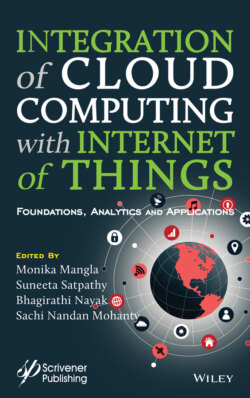Читать книгу Integration of Cloud Computing with Internet of Things - Группа авторов - Страница 34
2.1 Introduction
ОглавлениеThrough the World Wide Web, we’ve entered into a brand new era of connectivity. “Things have identities and virtual personalities operating in smart places using intelligent interfaces to connect and communicate inside social, environmental and user contexts [7].” More than twenty billion devices were connected with each other in 2017. This means that the potential risk of cyber-attacks is going on increasingly, equally.
Gartner’s special report indicates that there is a high level of risk to all the IoT devices, whether it is the platform, their operating systems or even the other devices to which they are connected [10]. The kind of risk that exists is that ranging from physical tampering to information hacking and impersonation and many more. Organizations’ functioning has completely changed with the coming in of IOT. With this change a whole range of risks have also emerged and it has become the utmost priority of organizations to manage these risks.
A variety of possible security threats are posed by IOT which could affect users: (1) Enabling unauthorized access and abuse of data and confidential information and (2) enabling attacks on linked networks and devices (3) developing security risks [22]. Scientists have proposed that privacy and online protection should not be segregated. All security policies need to be addressed with respect to IOT and its linking systems and apps. It’s also true that online protection is the main problem for cloud computing. “Safety is one of the key concerns required to avoid the occurrence and use of IOT,” the World Health Organization states. There are also several barriers to health at IoT. It would be necessary to explain:
1 a. Expansion of the ‘IoT’ to the ordinary network, network controls and cell network
2 b. website that links everyone
3 c. exchange of objects with each other
4 d. Accessible easily.
The code layer, information layer, physical layer and networking layer contain many technical obstacles to IoT security. To order to protect IoT, numerous reports discuss these security topics. Experiments that illustrate IoT’s human experience are rare, though. Some of the latest works on IoT defense still consider the technical aspect. In order to achieve success in technology performance or safety management, users need to understand Dhillon and Torkzadeh’s [9] expectations, values and beliefs.
We recognize that consumer expectations and values are balanced against technology to achieve positive results for information technology and the effective management of legislation. IoT Securing Science is in its infancy as it is a very active and recent research field. Further emphasis should also be placed on the confidentiality, fairness and privacy of IoT data and their credibility. Inside this article, we perform a thorough analysis to address numerous IoT security issues/problems along with the step to use the firewall for greater protection when performing online transactions.
